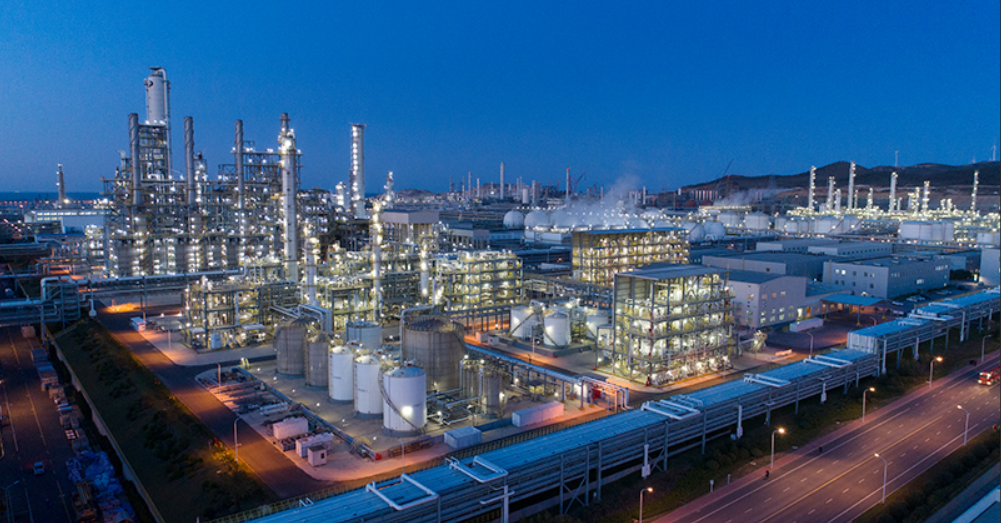Wanhua Chemical: World's First 10,000-ton Bio-based 1,3-Butanediol Plant Commences Production
Recently, a reporter from China Chemical Reporter learned from Wanhua Chemical Group Co., Ltd. that the company has built and put into operation the world's first 10,000-ton-level bio-based 1,3-butylene glycol facility using its own patented technology, with non-staple biomass as the raw material.

"The No. 1 Central Document of 2025 for the first time proposed the development of new agricultural productive forces, promoting the integration of industrial chains, and increasing the added value of agricultural products is one of its key contents. The bio-based 1,3-butylene glycol facility of Wanhua Chemical uses non-staple biomass as raw materials, prepared through fermentation, condensation, hydrogenation, and distillation processes, utilizing advanced biological fermentation and green synthesis technologies, extending the comprehensive utilization of agricultural products to the cosmetics industry, realizing 'from nature, back to nature,' which can fully meet market demand and ensure supply chain security," said a relevant person in charge at Wanhua Chemical.
1,3-butylene glycol possesses excellent moisturizing and safety properties, with lower skin irritation and a refreshing feel on the skin. It can effectively reduce the stickiness of the formulation system and also decrease the use of preservatives in formulations, making it an indispensable raw material in cosmetics. At the same time, due to its asymmetrical feature of having two hydroxyl groups, it also has important applications in fields such as power batteries and resin synthesis. Prior to this, global 1,3-butylene glycol production technology and capacity were mainly monopolized by foreign companies, leading to long-term domestic reliance on imports, and even shortages, affecting the development of downstream industries.
According to the introduction, as the world's first 10,000-ton-level bio-based 1,3-butylene glycol facility, Wanhua Chemical's 1,3-butylene glycol facility adopts its self-developed patented technology, significantly improving raw material utilization through innovative catalysts and production processes, avoiding resource waste, and reducing the generation of "three wastes." This facility also utilizes Wanhua Chemical's leading hydrogenation and purification technology platform to achieve precise removal of trace impurities, ensuring that critical indicators such as odor and purity lead the industry, and has laid out over 10 related patents. The production process of 1,3-butylene glycol by Wanhua Chemical uses green electricity sources like solar and wind energy. Compared to traditional petrochemical routes, it can significantly reduce carbon dioxide emissions, with up to a 70% reduction in CO2 emissions per ton of 1,3-butylene glycol produced, providing a new approach to the sustainable development of the industry and contributing to achieving the "dual carbon" goals.
A relevant person in charge at Wanhua Chemical stated that the company leads industry development through technological innovation, and in the field of care chemicals, has also developed bio-based raw materials such as rhamnolipids. In the future, it will continue to expand the use of biomass raw materials, supporting the green, safe, and sustainable development of downstream industries.
【Copyright and Disclaimer】The above information is collected and organized by PlastMatch. The copyright belongs to the original author. This article is reprinted for the purpose of providing more information, and it does not imply that PlastMatch endorses the views expressed in the article or guarantees its accuracy. If there are any errors in the source attribution or if your legitimate rights have been infringed, please contact us, and we will promptly correct or remove the content. If other media, websites, or individuals use the aforementioned content, they must clearly indicate the original source and origin of the work and assume legal responsibility on their own.
Most Popular
-

U.S. Appeals Court Officially Rules: Trump Tariff Unlawful and Void!
-

[Today's Plastics Market] General Materials Weakly Fluctuate, Engineering Materials Steadily Rise
-

At Least 44 Dead in Century-Old Fire! Questioning Hong Kong's Hong Fu Garden: Why Has the Path to Fire Resistance Taken 15 Years Without Progress?
-

Avatr Files for IPO on HKEX, Plans to Complete Listing in Q2 2026
-

Satellite chemical's profits surge! can the 26.6 billion yuan high-end new materials project meet expectations? a review of progress on four major projects






